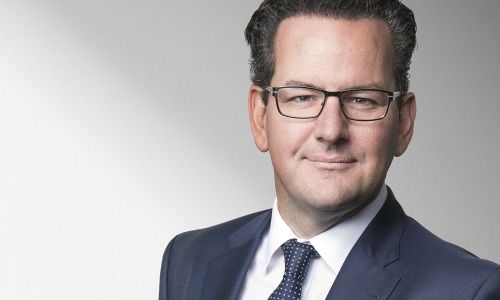Michael Welti: «When Art Becomes Profitable»
Art can be a feast for both the eyes and the bank balance. Securities backed by artistic masterpieces have emerged as an asset class in their own right, writes Michael Welti for finews.first.
This article is published on finews.first, a forum for authors specialized in economic and financial topics.
Art is attractive to private investors and has become a definitive asset class that offers new possibilities. As an asset that has maintained and will likely continue to maintain its value, art can be considered as a long-term investment with good returns and manageable risk.
This is especially true because younger generations with different life and career goals are posing new challenges for traditional asset management approaches, with wealth planning activities spanning several generations. A practice known as art lending enables collectors to obtain liquidity while at the same time avoiding direct sales and the transaction costs and tax impact they entail.
«The art world is also subject to cycles»
On the one hand, the international art market generates stable revenues of around 60 billion dollars per year. Global art market sales rose by six percent to 67.4 billion dollars in 2018, despite the slump in the stock markets. On the other hand, price trends remain as volatile in the art market as they do for many other asset classes, making portfolio diversification an important prerequisite for weathering any future downturns that may occur.
While the art world is also subject to cycles, the extremely high-quality niche markets have proven more resilient and less cyclically vulnerable in recent years.
«This enables a diversified product with low risk to be offered outside the traditional market»
Art lending is interesting for several reasons. Firstly, a securitization platform for asset-backed securities gives clients the opportunity to invest in bonds backed directly by works of art. These investments enable coupons to be paid quarterly or semi-annually with an annual return of between five and ten percent – significant income in an age of low-interest rates.
The coupon constitutes a premium due to the low or non-existent liquidity offered by alternative investments. This enables a diversified product with low risk to be offered outside the traditional market. The platform also offers clients the opportunity to take out loans and get more out of their art collection.
«These individuals seek to invest in art lending to optimize their portfolio diversification»
Every investor from each generation approaches art in a different way. Some clients treat art purely as an asset class offering diversification and low correlation with other investments. These individuals seek to invest in art lending to optimize their portfolio diversification while taking on a minimal amount of risk.
In these cases, the actual lending value is extremely modest, with one conservative estimate placing it at 30 to 50 percent. Other clients have a real passion for art and look to invest in a product in which they have a genuine interest. They see their investment as a labor of love.
Michael Welti is Head Zurich and Managing Director – Wealth Management at Reyl & Cie.
Previous contributions: Rudi Bogni, Peter Kurer, Oliver Berger, Rolf Banz, Dieter Ruloff, Werner Vogt, Walter Wittmann, Alfred Mettler, Peter Hody, Robert Holzach, Craig Murray, David Zollinger, Arthur Bolliger, Beat Kappeler, Chris Rowe, Stefan Gerlach, Marc Lussy, Nuno Fernandes, Richard Egger, Maurice Pedergnana, Marco Bargel, Steve Hanke, Urs Schoettli, Ursula Finsterwald, Stefan Kreuzkamp, Oliver Bussmann, Michael Benz, Peter Hody, Albert Steck, Martin Dahinden, Thomas Fedier, Alfred Mettler, Brigitte Strebel, Peter Hody, Mirjam Staub-Bisang, Nicolas Roth, Thorsten Polleit, Kim Iskyan, Stephen Dover, Denise Kenyon-Rouvinez, Christian Dreyer, Kinan Khadam-Al-Jame, Robert Hemmi, Anton Affentranger, Yves Mirabaud, Katharina Bart, Frédéric Papp, Hans-Martin Kraus, Gerard Guerdat, Didier Saint-Georges, Mario Bassi, Stephen Thariyan, Dan Steinbock, Rino Borini, Bert Flossbach, Michael Hasenstab, Guido Schilling, Werner E. Rutsch, Dorte Bech Vizard, Adriano B. Lucatelli, Katharina Bart, Maya Bhandari, Jean Tirole, Hans Jakob Roth, Marco Martinelli, Thomas Sutter, Tom King, Werner Peyer, Thomas Kupfer, Peter Kurer, Arturo Bris, Frederic Papp, James Syme, Dennis Larsen, Bernd Kramer, Ralph Ebert, Marionna Wegenstein, Armin Jans, Nicolas Roth, Hans Ulrich Jost, Patrick Hunger, Fabrizio Quirighetti, Claire Shaw, Peter Fanconi, Alex Wolf, Dan Steinbock, Patrick Scheurle, Sandro Occhilupo, Will Ballard, Michael Bornhaeusser, Nicholas Yeo, Claude-Alain Margelisch, Jean-François Hirschel, Jens Pongratz, Samuel Gerber, Philipp Weckherlin, Anne Richards, Antoni Trenchev, Benoit Barbereau, Pascal R. Bersier, Shaul Lifshitz, Klaus Breiner, Ana Botín, Martin Gilbert, Jesper Koll, Ingo Rauser, Carlo Capaul, Claude Baumann, Markus Winkler, Konrad Hummler, Thomas Steinemann, Michael Welti, Christina Boeck, Guillaume Compeyron, Miro Zivkovic, Alexander F. Wagner, Eric Heymann, Christoph Sax, Felix Brem, Jochen Moebert, Jacques-Aurélien Marcireau, Peter Hody, Ursula Finsterwald, Claudia Kraaz, Michel Longhini, Michael Welti, Stefan Blum, Zsolt Kohalmi, Karin M. Klossek, Nicolas Ramelet, Søren Bjønness, Lamara von Albertini, Andreas Britt, Gilles Prince, Fabrizio Pagani, Darren Willams, Salman Ahmed, Stephane Monier, and Peter van der Welle, Swetha Ramachandran, Teodoro Cocca, Beat Wittmann, and Ken Orchard.




















